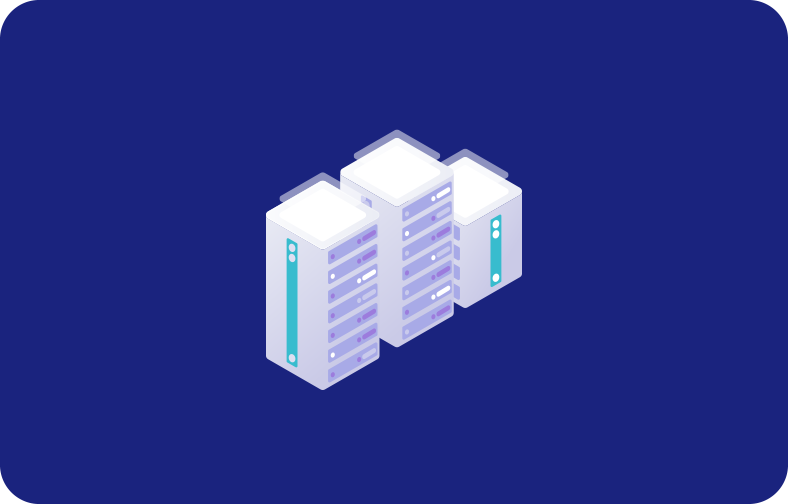The Evolution of Data Storage: From Punch Cards to the Cloud

Data storage has come a long way over the years, evolving from primitive methods like punch cards to modern data centers and the advent of cloud storage services. The various, data center architecture, design, facility and ways of storing and handling data have significantly changed as the necessity and growth of information continues to increase. Let's discuss the history and evolution of the modern, data center design, architecture, storage infrastructure management and storage resources.
This blog explores the essential turning points and technological developments that have altered how we store and access data. We will discover how data storage has evolved from the early days of physical storage and how the introduction of virtual cloud computing systems impacts our digital lives today. Join us as we uncover the fascinating advancements that have shaped the way we store data, leading us from humble beginnings to a future where data is readily available and safely preserved.
The Early Days of Data Storage
Data storage was complex in the early days of computing. One of the oldest methods of data storage was punch cards. To represent data, these cards, which were typically made of paper or cardboard, had holes punched into them. In the 19th and 20th centuries, punch cards were extensively used for tasks like census tabulation and data processing. However, they have drawbacks in terms of storage capacity and physical damage susceptibility.
Magnetic tapes became a more reliable method of data storage as computers advanced. In these, data was stored on a long strip of tape covered with magnetized particles. Magnetic tapes offered greater store capacities and quicker access times than punch cards. They were crucial in storing massive amounts of data, such as business records and scientific research data.
Notably, the introduction of the first computers marked a significant breakthrough in data storage. The IBM 305 RAMAC, released in 1956, was the first computer to incorporate a hard disk drive (HDD). By providing a non-volatile storage medium that could hold significant amounts of data, this invention transformed the way that data was used early computer systems.
Hard Disk Storage: A Major Breakthrough
An important turning point in the development of data storage was the introduction of hard disk storage. Data is stored and retrieved using rotating platters coated with magnetic materials in hard disks, also known as hard disk drives (HDDs). The launch of the IBM 305 RAMAC, which had a sizeable 5-megabyte storage capacity, paved the way for the development of more advanced HDDs.
Hard disks have significantly improved over time in terms of storage capacity, data transfer rates, and form factors, which have had a significant impact on data usage. Today, HDDs can store terabytes (TB) and even petabytes (PB) of data. Due to their low cost and high storage capacity, they are commonly used in desktop computers, servers, and data centers. Its capacity to store vast amounts of data in a compact form factor makes HDDs indispensable for various applications.
Rise of the Floppy Disk and Compact Discs
The development of the floppy disk and compact discs (CDs) in the 1970s and 1980s ushered in a new era of data storage characterized by portability and ease of data transfer. Floppy disks were first released with a basic capacity of a storage capacity of 80 kilobits (KB), but they quickly evolved to larger sizes, with 1.44 MB becoming the standard size for the majority of personal computers. Files, software, and even operating systems were frequently stored and transferred via floppy disks.
Compact Disc revolutionized multimedia content storage. When compared to floppy disks, CDs offered much more storage space, with the standard CD-ROM providing 650 megabytes (MB) of storage. This allowed for the distribution of software, music, and movies on a single disc. The introduction of writable and rewritable CDs further enhanced their usefulness, enabling users to burn and rewrite data repeatedly.
Floppy disks and CDs were essential to the growth of personal computing and data storage. They offered simple ways to share files, distribute software, and make backups. But as technology advanced, it became clear that CDs and floppy disks had their limitations. Their storage capacities could not keep up with the growing files and application sizes, leading to the need for more advanced storage solutions.
Flash Storage Revolutionizes Portability and Speed
Data storage reached a new level of portability and speed in the late 1990s and early 2000s with the development of flash storage technology. Flash storage, which uses NAND-based memory cells, provides fast data transfer rates, small form factors, and high durability. The introduction of USB drives and SD cards made it easier than ever to carry and transfer vast amounts of data.
Data access and storage have changed dramatically as a result of flash storage technologies. Unlike traditional storage methods, flash storage does not have any moving parts. Since data is stored on solid-state memory chips, it is incredibly robust and damage-resistant. Flash storage provides fast data access and transfer rates, which results in improved performance and productivity.
Flash storage devices are highly portable due to their small size and lightweight, which enables users to access and transfer data wherever they go. Flash storage played a significant role in the evolution of mobile devices, as it offered a reliable means to increase storage space and share data while on the go.
The Modern Era: Solid State Drives (SSDs)
In the modern era evolution data storage, solid-state drives (SSDs) have revolutionized data storage. SSDs don't have moving parts like conventional hard disk drives (HDDs) and instead use flash memory to store data. This results in faster access, enhanced reliability, and less power usage.
SSDs have become increasingly popular, especially in high-performance PCs. They offer faster read and write speeds compared to HDDs, resulting in quicker boot times, faster application loading, and overall improved system performance. Since SSDs don't have any moving parts, because of which they generate less noise and heat, the likelihood of mechanical breakdowns is also reduced.
SSDs built on flash memory have a number of benefits over traditional storage. They provide rapid file retrieval and modifications along with random data access. Unlike HDDs, SSDs don't require disk defragmentation because they access data without physical head movement. This improves efficiency and reliability.
With consumer-grade choices available in capacities ranging from hundreds of gigabytes (GB) to multiple terabytes (TB), SSDs have made significant progress in storage capacity. They have become the standard storage medium for business critical data intensive applications like gaming, video editing, support infrastructure, managed services data centers design, business applications, colocation data centers, center software defined networking and security, and professional workstations. SSDs have also gained popularity in the data center provider business sector due to their speed redundant capacity components and dependability in server applications and data-intensive tasks enterprise data centers.
The cost of SSDs has dropped through the years, making them more affordable. This, together with their better performance and dependability, has caused them to be widely used in consumer devices and as key components in a variety of computing systems.
SSDs will keep the cloud based data centers and the data center equipment tiers provider growing in terms of capacity, performance, and affordability as technology develops. They are poised to take control of the enterprise data center security and storage market by addressing the rising demands for digital storage and providing the various data centers important the data center tiers, with access that is quicker and more reliable than other types of data centers.
The Future: Cloud Storage and Beyond
As we move into the future, cloud data center servers and storage has become the dominant force in data storage. It allows users to remotely store their data on data center infrastructures and servers managed by third-party cloud services provider. With nearly limitless storage capacity and the flexibility to scale on demand, cloud storage offers convenience and accessibility from any location with an internet connection.
The exponential data expansion caused by the Internet of Things (IoT) and the demand for big data analytics require scalable and efficient storage solutions. Cloud storage providers utilize cutting-edge infrastructure in vast data centers to ensure high availability, redundancy, and durability of stored data.
Cloud storage has many benefits over conventional storage techniques. Users' own on premises physical servers, storage at multiple data centers and their data center, network infrastructure and data center infrastructure management, is no longer necessary, which lowers costs and complexity. Replication and data backup across various sites ensure data redundancy while reducing the risk of data loss. Cloud storage also makes it simple to share and retrieve data from any location.
The future of the hyperscale data centers, cloud data centers support infrastructure, and storage goes beyond cloud storage. Edge computing and distributed storage systems are transforming the storage landscape. Edge computing reduces latency and enables real-time data processing by using both edge data centers and in data center facilities bringing storage and computation closer to the data source. Using networked nodes, distributed storage systems enhance large enterprise data centers' and large data centers' availability and resilience.
Future data storage will give privacy and security issues a top priority as data volume and complexity increase. Data encryption, access control mechanisms, and advanced security systems as well as authentication processes will protect sensitive information in storage systems.
Final WordThe evolution of data storage has been driven by the necessity to accommodate the ever-increasing growth of information. Each successive development, from punch cards and magnetic tapes to hard drives, floppy disks, flash storage, and solid-state drives, has brought improvements in speed, capacity, and portability. The advent of cloud storage has accelerated the way we store and manage data, with future trends suggesting improved privacy, security, and distributed storage solutions. As technology continues to evolve, data storage will remain a crucial aspect of our digital lives, adapting to the dynamic needs and demands of our interconnected world.
Frequently Asked Questions
What does the future hold for data storage?
The future of data storage is likely to witness further advancements in privacy, security, and real-time data processing. Technologies like edge computing and distributed storage systems will play a vital role in optimizing data storage and management, catering to the demands of IoT and big data applications.
What are the primary factors to consider when choosing a data storage solution?
When selecting a data storage solution, important factors to consider include storage capacity, speed, reliability, scalability, security features, compatibility with existing systems, and cost-effectiveness.
Can data be lost or corrupted in modern data storage systems?
While modern data storage systems have improved reliability, there is still a risk of data loss or corruption. Factors such as hardware failures, software bugs, power outages, and human error can lead to data loss. Implementing regular backups and data redundancy measures can help mitigate these risks.
How has the evolution of data storage impacted businesses and organizations?
The evolution of data storage has had a profound impact on businesses and organizations. It has enabled them to store and process vast amounts of data, leading to improved decision-making, enhanced productivity, and new business opportunities. Additionally, the shift towards cloud storage has allowed for remote collaboration, data sharing, and cost savings on infrastructure.
Are there any environmental concerns associated with data storage?
Data storage technologies have raised environmental concerns due to the energy consumption of data centers and the disposal of electronic waste. Efforts are being made to increase the energy efficiency of data centers and promote responsible recycling and disposal practices for outdated storage devices.
Can data storage technologies become obsolete?
Yes, data storage technologies can become obsolete over time. As technology advances, new storage mediums and formats are introduced, offering higher capacities, faster speeds, and improved functionality. However, it's crucial to ensure data migration strategies are in place to transfer data from outdated storage technologies to newer ones.
How does data storage impact data privacy regulations and compliance?
Data storage plays a crucial role in complying with data privacy regulations. Organizations must implement appropriate security measures, data encryption, access controls, and data retention policies to protect sensitive information and comply with regulations like the California Consumer Privacy Act [CCPA] or the General Data Protection Regulation [GDPR]. Not adhering to these regulations can result in severe penalties and reputational damage.










